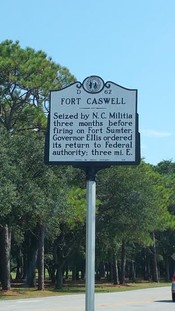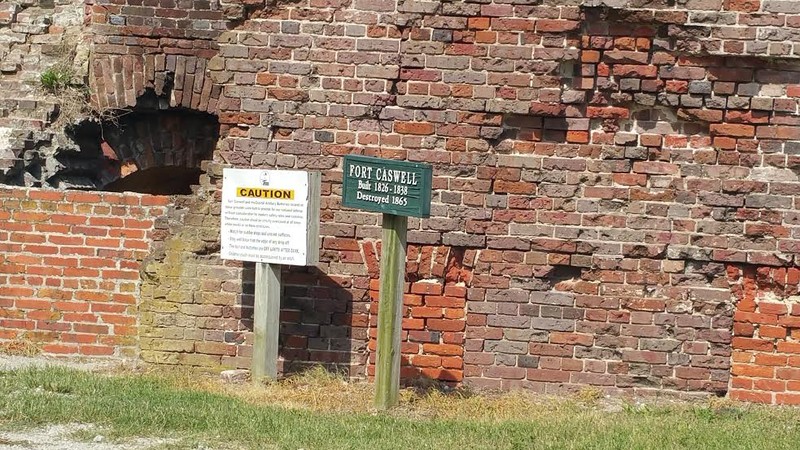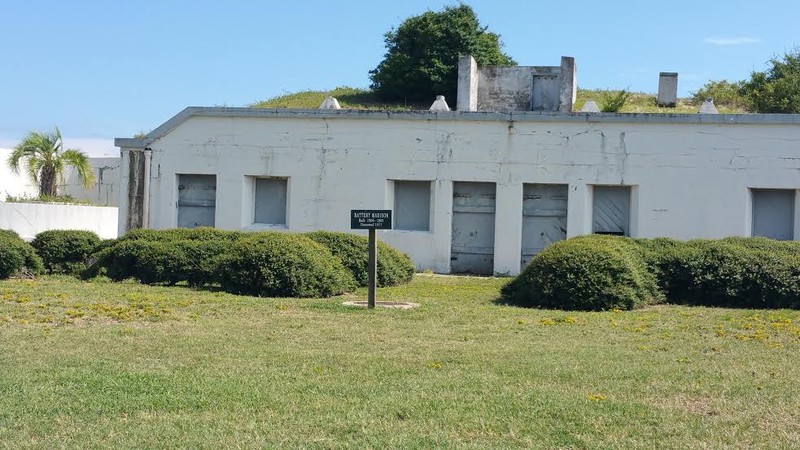Fort Caswell
Introduction
Text-to-speech Audio
Images
Fort Caswell is located in Oak Island, North Carolina. It was constructed to protect the Cape Fear River and Wilmington, North Carolina.

Construction on Fort Caswell began in 1826 and ended in 1838. It was set on fire in 1865 near the end of the Civil War.

Fort Caswell was used in the Spanish American War, World War I and World War II. Here is a Battery Madison located within the fort that was built between 1904-05. It was disarmed in 1917.

Backstory and Context
Text-to-speech Audio
Due to insufficient defense along the Cape Fear River, the building of Fort Caswell was authorized by Congress in 1825. Construction on the fort began in 1826 and ended in 1838. The fort was named after North Carolina Governor Richard Caswell who was considered to be a hero in the American Revolution. The fort was designed in the shape of a pentagon. It was intended to mount 61 cannons. It was built in order to defend the lower portion of Cape Fear River and Wilmington which served as a major port. Fort Caswell served this purpose until 1861.
When Southern states began seceding from the Union, those living in the area became worried the guns housed at Fort Caswell may be used against the local community. The Cape Fear Minutemen, a local military organization, took it upon themselves to seize the fort from its caretaker. In an attempt to prevent military confrontation with the U.S. Government prior to their decision on secession, North Carolina Governor John Willis Ellis order Fort Caswell to be returned to the caretaker. North Carolina troops once again took over the fort when President Abraham Lincoln failed to evacuate Fort Sumter in Charleston Harbor triggering a Confederate assault on the fort.
During the Civil War, the Fort Caswell was used in the Confederacy’s tiered defense of the Cape Fear River. Fort Caswell allowed for the river and Wilmington to remain open to blockade running until 1865. Although the Union considered attacking the fort on several different occasions, none of their plans were carried out. There were no casualties at Fort Caswell by enemy fire during the Civil War. Fort Caswell was ordered to be evacuated by Confederate authorities after Fort Fisher fell to a land and sea assault on January 15, 1865. Two days later the barracks and the wooden parts of the fort were set on fire. One hundred miles away, sounds of the exploding gunpowder magazines could be heard. One whole wall of the fort was demolished in the explosion. The river was closed to blockade running after the forts at the mouth of the Cape Fear River fell. This cut of the supply of vital sources to the Confederate army. Many historians believe this led to the collapse and surrender of General Robert E. Lee’s Army of Northern Virginia.
In the 1890s, when war with Spain became a threat, the U.S. Army began building defense at Fort Caswell. Centered around the ruins of the old fort were concrete mortar and rapid fire gun batteries. However, the fort never came under fire during the Spanish American War or World War I.The U.S. Government declared Fort Caswell surplus property after it was used as a watch station for enemy submarines during World War II. The fort is now owned by the North Carolina Baptist Convention. The North Carolina Baptist Assembly, now located at Fort Caswell, is a retreat and conference center. It is not open to the general public.
